Top AI Tools for Enhancing Creativity in 2024
Category: Productivity & Automation
Unlock Your Creative Potential with AI Tools
For professionals, entrepreneurs, and tech enthusiasts, creativity is often the secret weapon to stand out, innovate, and drive productivity. If you’ve landed here, you’re likely exploring how AI tools can elevate your creative process without sacrificing efficiency. You already understand the value of technology, but the challenge lies in selecting the right AI-driven solutions that truly streamline ideation, content creation, design, or brainstorming — all while fitting seamlessly into your workflow.
Unlike generic tool roundups, this post dives deeply into the best AI-powered creativity tools, breaking down their unique functions, use cases, and integration strengths. Whether you’re looking to generate compelling visuals, write engaging copy, or spark innovative concepts, this guide addresses your specific needs with practical insights rather than fluff. By reading on, you’ll discover actionable ways to harness AI’s capabilities to not just boost inspiration but also automate repetitive creative tasks, empowering you to focus on what matters most: delivering impactful work faster and smarter.
- Unlock Your Creative Potential with AI Tools
- Understanding AI’s Role in Enhancing Creativity
- AI Writing Assistants: Revolutionizing Copywriting and Storytelling
- AI Design and Visual Creation Tools: Revolutionizing Image, Graphic, and Video Content
- AI Tools for Music and Audio Creation: Elevate Your Sound with Intelligent Assistance
- Idea Generation and Brainstorming with AI: Ignite Creativity and Overcome Blocks
- Automation of Repetitive Creative Tasks: Streamline Your Workflow with AI
- Integrating AI Creativity Tools into Your Workflow: Strategies for Selecting and Combining AI Tools Effectively
- Case Studies: Real-World Success Stories of AI-Enhanced Creativity
- Ethical Considerations and Limitations: Addressing Potential Drawbacks, Biases, and Ethical Issues When Relying on AI for Creative Work
- Future Trends in AI and Creativity: What to Expect and How to Prepare
Understanding AI’s Role in Enhancing Creativity
Artificial Intelligence is rapidly transforming the way we approach creative work by augmenting human imagination and reducing the time spent on routine tasks. Rather than replacing creativity, AI acts as a powerful partner that helps unlock new ideas and perspectives, enabling creators to push boundaries more efficiently. From generating initial concepts to refining drafts or designing visuals, AI tools streamline various stages of the creative process—making innovation faster and more accessible.
How AI Augments Human Creativity
AI enhances creativity by leveraging vast amounts of data, learning patterns, and offering suggestions that may not be immediately obvious to human creators. It excels at:
- Idea Generation: AI-powered brainstorming tools help spark new concepts through predictive text and associative thinking.
- Content Creation: Intelligent writing assistants and content generators produce drafts, headlines, or even full articles while maintaining tone consistency.
- Visual Design: AI-driven design software can create graphics, layouts, and even entire branding concepts based on simple inputs.
- Music & Video Production: AI assists with composing music, editing videos, or suggesting enhancements, allowing creators to focus on artistry rather than technical details.
Benefits of Integrating AI Tools into Creative Workflows
Incorporating AI into your creative processes unlocks several key advantages:
- Enhanced Efficiency: Automating repetitive tasks like formatting, editing, or basic design frees up valuable time for higher-level creative thinking.
- Improved Quality: AI tools offer suggestions based on proven data, leading to more polished and impactful outcomes.
- Increased Innovation: Exposure to AI-generated ideas encourages out-of-the-box thinking and reduces creative blocks.
- Seamless Collaboration: Many AI platforms integrate smoothly with existing software, enabling teams to collaborate and iterate faster.
By understanding AI’s complementary role, professionals can harness these tools not only to boost productivity but also to elevate the overall quality and originality of their creative projects. In the next sections, we’ll explore specific AI tools tailored to different creative domains, helping you find the perfect fit for your unique workflow.
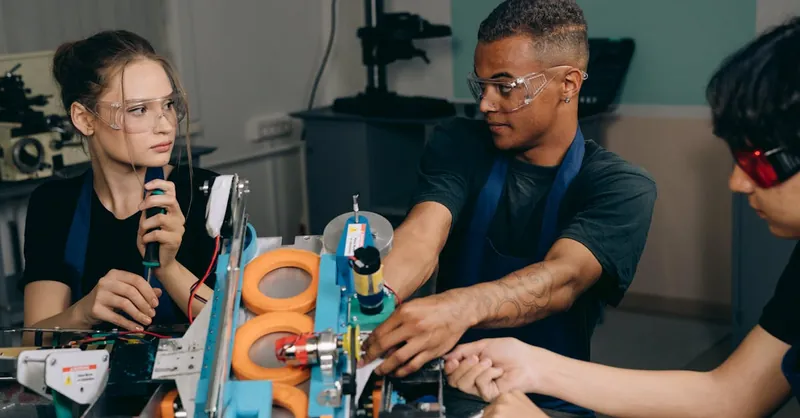
Image courtesy of Mikhail Nilov
AI Writing Assistants: Revolutionizing Copywriting and Storytelling
One of the most transformative applications of AI in creative work is through AI-powered writing assistants that enhance every stage of content development — from idea generation and drafting to language refinement. These intelligent tools serve as dynamic collaborators, significantly accelerating copywriting and storytelling processes while maintaining a natural, engaging voice tailored to your target audience.
AI writing assistants leverage advanced natural language processing (NLP) algorithms to offer a wide range of benefits for creators:
- Idea Generation: When facing writer’s block or brainstorming sessions, AI can propose fresh angles, suggest relevant topics, and even create compelling headlines or opening lines. This jumpstarts your creativity, helping you think beyond traditional boundaries.
- Drafting Content: Many AI platforms can generate entire drafts based on brief prompts, saving you countless hours that would otherwise be spent on initial writing. These drafts provide a strong foundation, which you can then customize to reflect your unique brand and style.
- Language Enhancement: From grammar and tone correction to improving readability and engaging storytelling, AI tools refine your text to ensure clarity, correctness, and emotional impact. This layer of polish elevates written content to professional standards without the need for extensive manual editing.
Some popular AI writing assistants integrate seamlessly with existing editors and platforms, enabling you to work uninterrupted while benefiting from in-line suggestions and collaborative features. This smooth integration enhances workflow efficiency, making it easier than ever to produce high-quality content consistently.
By using AI writing assistants, professionals, marketers, and storytellers can overcome common creative hurdles and drastically reduce content creation time — freeing up mental energy to focus on strategic thinking and innovation. As a result, these tools not only boost productivity but also unlock new opportunities for compelling storytelling that resonates with audiences.
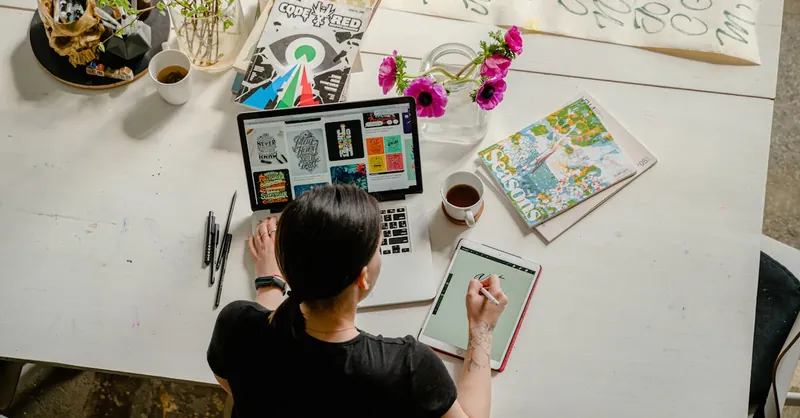
Image courtesy of Antoni Shkraba Studio
AI Design and Visual Creation Tools: Revolutionizing Image, Graphic, and Video Content
In the realm of creative design and visual content creation, AI-powered tools are transforming how professionals and creators generate compelling graphics, images, and videos. These platforms leverage generative art technologies, machine learning, and automation to streamline design workflows, enabling users to produce high-quality visuals rapidly without requiring extensive technical skills. Whether you’re a marketer needing eye-catching social media graphics, a designer seeking fresh inspiration, or a video editor looking for automated enhancements, AI design tools offer scalable solutions that boost creativity while saving time.
Key Capabilities of AI Design and Visual Creation Platforms
AI tools for visual content excel by providing several game-changing features:
- Generative Art Creation: AI models like GANs (Generative Adversarial Networks) and diffusion algorithms craft original, unique images and artwork based on text prompts or user inputs, enabling limitless creative expression without manual drawing or photography.
- Design Automation and Templates: Platforms use AI to automate repetitive design tasks such as layout creation, color matching, and font selection, ensuring consistent branding and professional aesthetics with minimal effort.
- Image Enhancements and Editing: Intelligent photo and video editing tools apply AI-powered filters, remove backgrounds, upscale resolution, or perform object recognition to speed up complex edits that traditionally take hours.
- Video Content Generation and Editing: AI assists by automatically generating clips from scripts or storyboard prompts, suggesting cuts, transitions, or effects that optimize flow and engagement without advanced video production expertise.
Advantages of Integrating AI Visual Tools into Creative Workflows
- Accelerated Visual Production: Automate initial drafts and iterations, reducing turnaround time from concept to final image or video.
- Enhanced Creativity Through AI Inspiration: Discover unexpected combinations, color schemes, and design styles generated by AI algorithms that stimulate human creativity.
- Cost-Effective Design Solutions: Decrease reliance on multiple specialized tools or extensive freelance work by handling core design and production in-house with AI.
- Scalability and Consistency: Produce large volumes of branded visuals maintaining uniform style guidelines effortlessly.
By embracing AI design and visual creation tools, creators can focus more on strategic storytelling and creative direction while entrusting routine visual tasks to intelligent automation. This symbiosis of human vision and AI capability is redefining the future of creative productivity and innovation — helping brands and professionals stand out with captivating, tailor-made visuals at unprecedented speed and scale.
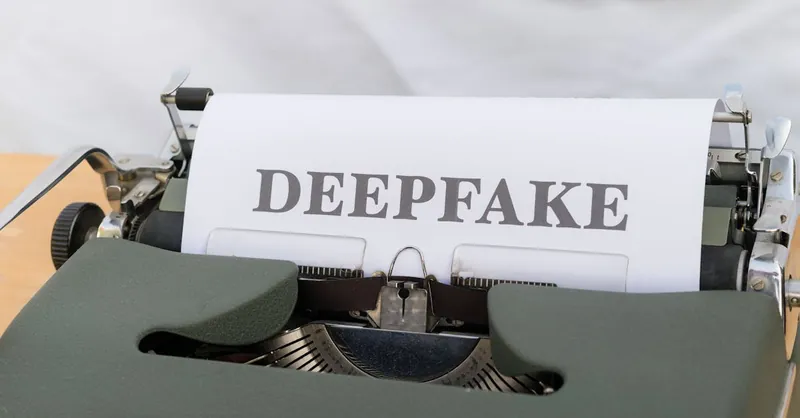
Image courtesy of Markus Winkler
AI Tools for Music and Audio Creation: Elevate Your Sound with Intelligent Assistance
In the dynamic world of music composition, sound design, and audio enhancement, AI-powered tools are revolutionizing how musicians, producers, and content creators craft their sonic experiences. These intelligent platforms use advanced algorithms, machine learning, and neural networks to automate complex audio tasks—enabling users to generate original melodies, design immersive soundscapes, and enhance audio quality with unprecedented speed and precision. Whether you’re a seasoned artist seeking fresh inspiration or a podcaster aiming for crystal-clear sound, AI music and audio tools amplify creativity while streamlining production workflows.
Key Features of AI Music and Audio Creation Tools
- AI-Assisted Composition: Tools leverage AI to compose melodies, harmonies, and chord progressions tailored to your style or mood input. This accelerates idea generation and helps overcome creative blocks by providing a musical foundation you can build on.
- Sound Design and Synthesis: AI-driven synthesizers and sound modeling platforms allow creators to experiment with unique timbres and textures, generating custom instruments or effects that expand the sonic palette without requiring deep technical knowledge.
- Automatic Audio Mixing and Mastering: Intelligent audio processors analyze tracks to optimize levels, equalization, compression, and spatial effects—delivering professionally polished mixes quicker than traditional manual processes.
- Voice and Audio Enhancement: AI enhances vocal recordings and podcasts by reducing background noise, improving clarity, and even generating realistic voice overs or voice transformations, improving listener engagement and production value.
Benefits of Incorporating AI in Music and Audio Production
- Speed and Efficiency: Automate routine or technically demanding sound engineering tasks, freeing creators to focus on artistic direction and innovation.
- Creative Expansion: Access novel musical ideas and sound textures generated by AI models that inspire experimentation beyond conventional boundaries.
- Cost-Effective Solutions: Reduce dependency on expensive studio time and specialized audio engineers by leveraging AI-driven mixing and mastering services.
- Accessibility: Empower both beginners and professionals to produce high-quality audio content with minimal learning curve, democratizing music production.
By integrating AI tools into your music and audio workflow, you not only boost productivity and creativity but also unlock new possibilities for sonic innovation that resonate with audiences across genres and platforms.
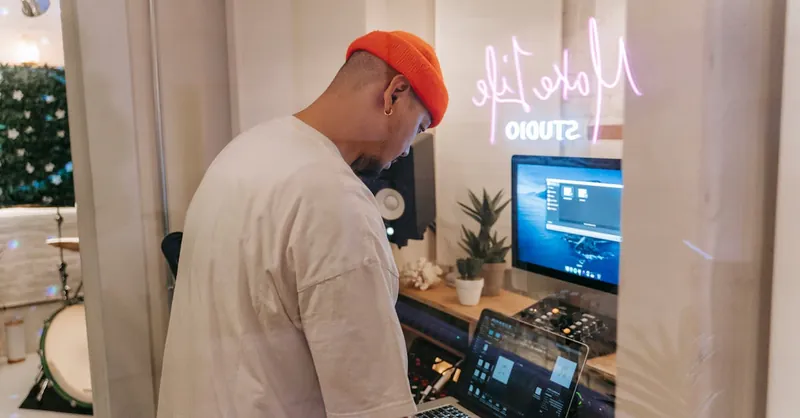
Image courtesy of Anna Pou
Idea Generation and Brainstorming with AI: Ignite Creativity and Overcome Blocks
When it comes to breaking free from creative blocks and generating groundbreaking ideas, AI-powered tools have emerged as invaluable allies for professionals, entrepreneurs, and creatives alike. These platforms leverage advanced algorithms to facilitate mind mapping, concept generation, and innovation, providing a structured yet flexible way to explore new possibilities and expand your creative thinking. Unlike traditional brainstorming, AI-enhanced ideation taps into large datasets and associative logic to uncover connections and ideas that might otherwise go unnoticed.
How AI Elevates Idea Generation and Brainstorming
AI brainstorming tools are designed to stimulate creativity by:
- Automating Mind Mapping: AI platforms create visual concept maps that organize thoughts and themes dynamically, helping you see relationships and prioritize ideas seamlessly.
- Generating Fresh Concepts: By inputting keywords or brief prompts, AI generates diverse suggestions, alternative viewpoints, or even entirely new concepts—perfect for innovation-driven projects.
- Overcoming Creative Blocks: When faced with a blank slate, AI acts as a creative partner, supplying initial seeds or jumping-off points that reduce mental friction and get ideas flowing instantly.
- Facilitating Collaborative Innovation: Many AI ideation tools support real-time collaboration and integration with productivity suites, enabling teams to brainstorm faster and converge on winning ideas.
Benefits of Using AI for Brainstorming and Concept Development
- Enhanced Creativity: AI introduces novel perspectives by combining data-driven insights with imaginative possibilities.
- Increased Productivity: Speed up the ideation phase, allowing more time to develop, test, and refine concepts.
- Scalability: Generate a high volume of ideas in minutes, something difficult to achieve with manual brainstorming sessions.
- Structured Exploration: Keep creative thinking organized and goal-oriented through AI-assisted mapping and categorization.
By integrating AI-driven idea generation and brainstorming tools into your creative workflow, you empower yourself and your team to unlock innovative solutions, stimulate continuous creative momentum, and turn abstract concepts into actionable strategies—all while maintaining productivity and focus. Whether you're launching a new product, crafting marketing campaigns, or designing complex systems, AI can be the catalyst that transforms inspiration into impactful realities.
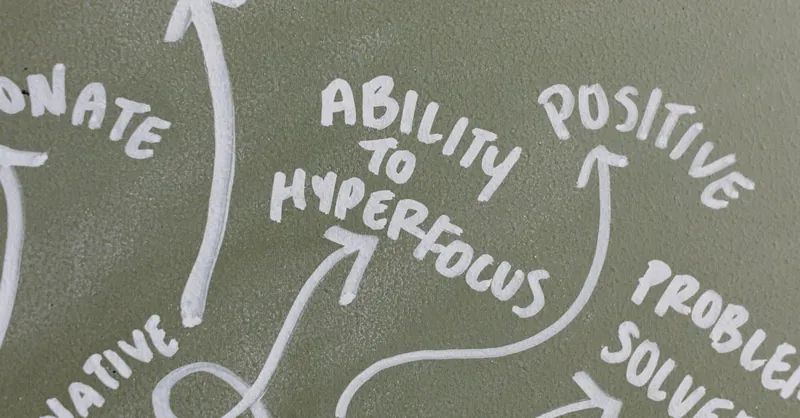
Image courtesy of Tara Winstead
Automation of Repetitive Creative Tasks: Streamline Your Workflow with AI
One of the most practical ways AI boosts creative productivity is through the automation of repetitive, mundane tasks that often bog down the creative process. Activities such as formatting documents, editing content for consistency, or generating data visualizations can consume significant time and mental energy. AI-powered automation tools take over these routine elements, allowing creators to focus on higher-value, strategic, and original thinking — ultimately accelerating project completion and enhancing output quality.
Key Areas Where AI Automates Repetitive Creative Tasks
- Smart Formatting and Layout: Advanced AI algorithms can automatically apply consistent styles, templates, or formatting rules across documents, presentations, and design mockups—reducing manual adjustments and maintaining brand integrity.
- Automated Editing and Proofreading: AI editing tools go beyond basic grammar checks by identifying tone inconsistencies, style deviations, and structural improvements, automatically suggesting or applying corrections that align with your creative goals.
- Data Visualization and Reporting: AI-driven platforms convert raw data into clear, compelling charts, infographics, and dashboards without complex manual design work, enabling creatives and analysts alike to present insights effectively.
- Content Repurposing: Reformatting and adapting content for different channels (blog posts, social media snippets, video scripts) is accelerated by AI, which can rewrite, summarize, or reorganize material automatically for multiple formats.
- Version Control and Asset Management: AI systems monitor changes, track content versions, and organize creative assets, streamlining collaboration and reducing errors in fast-paced environments.
Advantages of Automating Creative Workflows with AI
- Time Savings: Free up hours by letting AI handle routine chores like formatting and error correction.
- Higher Consistency: Maintain uniform quality and branding across all creative outputs without tedious manual oversight.
- Reduced Cognitive Load: Minimize decision fatigue by offloading repetitive tasks to AI, preserving creative energy for ideation and innovation.
- Scalability: Easily handle larger workloads or multiple projects simultaneously without compromising quality or speed.
By embracing AI automation for repetitive creative tasks, professionals gain an enhanced capacity to deliver innovative, polished, and impactful work faster. This intelligent delegation not only optimizes productivity but also transforms how creative teams manage their time, priorities, and focus—establishing a new standard for efficiency in the creative industries.
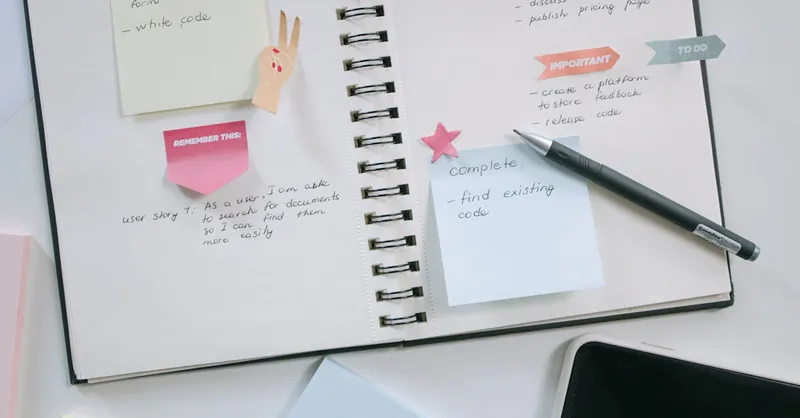
Image courtesy of Ivan Samkov
Integrating AI Creativity Tools into Your Workflow: Strategies for Selecting and Combining AI Tools Effectively
To maximize productivity without disrupting existing processes, integrating AI creativity tools into your workflow requires a strategic approach that balances innovation with seamless adoption. Choosing the right AI tools should be guided not only by their standalone capabilities but also by how well they complement your current technology stack and creative habits. The goal is to enhance efficiency and creative output while maintaining workflow continuity.
Key Strategies for Selecting and Combining AI Tools
-
Identify Workflow Bottlenecks: Start by analyzing your creative process to pinpoint repetitive, time-consuming tasks or areas where inspiration tends to stall. Targeting these pain points with AI tools ensures meaningful productivity gains.
-
Prioritize Ease of Integration: Opt for AI solutions that offer native integration or plugins with your existing software environments—be it content management systems, design suites, project management platforms, or collaboration tools. This reduces learning curves and avoids workflow fragmentation.
-
Leverage Complementary Functionality: Combine AI tools that serve different facets of creativity—such as pairing AI writing assistants with visual generation platforms or music AI with audio editing solutions. This synergy enables end-to-end creative automation and innovation without overwhelming your process.
-
Test for Customizability and Control: Select AI tools that provide adjustable parameters and human oversight, allowing you to tailor outputs and maintain creative authenticity rather than settling for generic or overly automated results.
-
Monitor and Iterate Continuously: Regularly assess how AI tools impact your workflow efficiency, output quality, and team collaboration. Use insights to optimize tool combinations, adjust usage patterns, or explore emerging technologies that better fit evolving needs.
By adopting a thoughtful integration strategy centered on workflow compatibility and multi-tool harmony, you can harness AI-powered creativity tools to unlock new levels of productivity, innovation, and consistency—without sacrificing the fluidity and nuance that define great creative work. This balanced approach ensures AI acts as an enabler and amplifier of your creative potential, rather than a disruptive force.
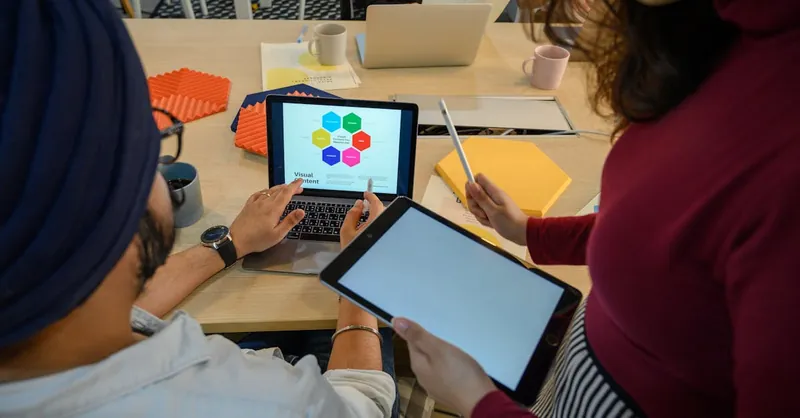
Image courtesy of Ketut Subiyanto
Case Studies: Real-World Success Stories of AI-Enhanced Creativity
Exploring concrete examples of how professionals and entrepreneurs leverage AI creativity tools offers powerful insights into the transformative impact of these technologies across industries. From startups to established enterprises, real-world case studies reveal how AI-driven solutions not only boost creative output but also foster innovation, streamline workflows, and generate measurable business value.
Case Study Highlights: AI Tools Driving Creative Excellence
-
Marketing Agency Scaling Content Production with AI Writing Assistants
A digital marketing firm integrated advanced AI writing platforms to automate blog post generation, social media copy, and client proposals. By using AI to handle initial drafts and idea generation, the team reduced content turnaround times by over 50%, allowing creatives to focus on strategy and personalized storytelling. This increased output without quality loss directly contributed to a 30% growth in client engagement metrics within six months. -
Independent Designer Boosting Visual Innovation Using Generative AI
An independent graphic designer adopted AI-powered design tools to create unique branding concepts and visual assets rapidly. Generative AI models enabled the designer to experiment with diverse styles and color palettes effortlessly, accelerating the creative iteration process. As a result, project delivery speed improved by approximately 40%, with clients praising the fresh, innovative aesthetics that distinguished their brand presence. -
Music Producer Enhancing Soundscapes with AI Composition Tools
A music producer incorporated AI-assisted composition software into their workflow, using it to generate melodic ideas and harmonize arrangements. The AI’s ability to propose novel musical progressions helped overcome creative blocks and expanded sound experimentation. The streamlined workflow reduced production time per track by nearly 35%, enabling the artist to release new albums more frequently while maintaining artistic integrity. -
Entrepreneur Leveraging AI Brainstorming Platforms for Product Innovation
A startup founder utilized AI-driven brainstorming applications to ideate product features and marketing concepts collaboratively with their remote team. The AI’s facilitation of mind maps and concept generation led to accelerating the ideation phase by 60%, fostering diverse perspectives and ultimately resulting in a product that resonated more deeply with target users upon launch.
Key Takeaways from AI Creativity Success Stories
- Increased Productivity: Across different creative fields, AI tools consistently reduce time spent on ideation, drafting, and iteration, freeing professionals to focus on high-impact tasks.
- Enhanced Innovation: AI-generated suggestions and automated workflows encourage exploration beyond traditional thinking, often leading to unique, standout creative outputs.
- Scalable Creativity: By automating routine elements, individuals and teams can handle larger workloads and multiple projects simultaneously without sacrificing quality.
- Measurable Business Impact: The adoption of AI creativity tools has translated into higher engagement rates, faster go-to-market cycles, and stronger brand differentiation—key drivers for competitive advantage.
These real-world examples underscore the practical benefits and strategic value of integrating AI creativity tools into professional workflows. Harnessing AI’s capabilities empowers creators and entrepreneurs to elevate their creative potential, optimize efficiency, and deliver innovative solutions that drive success in today’s fast-paced, digitally-driven economy.

Image courtesy of Ivan Samkov
Ethical Considerations and Limitations: Addressing Potential Drawbacks, Biases, and Ethical Issues When Relying on AI for Creative Work
As AI tools become integral to enhancing creativity, understanding their ethical implications and inherent limitations is essential for responsible and effective adoption. While AI accelerates innovation and productivity, it also introduces risks such as biased outputs, overreliance on automation, and challenges related to intellectual property and originality. Navigating these concerns ensures that AI serves as a true creative partner without compromising ethical standards or creative integrity.
Key Ethical Concerns and Limitations of AI in Creativity
-
Bias and Fairness: AI models learn from vast datasets that may contain historical, cultural, or social biases. These biases can unintentionally influence AI-generated content, leading to stereotypes, exclusion, or misrepresentation in writing, visuals, or audio. Creators must critically evaluate AI outputs to detect and mitigate bias, ensuring diverse and inclusive results.
-
Loss of Human Authenticity: Overdependence on AI-generated ideas or content risks diluting the unique voice, emotional nuance, and cultural context that human creativity brings. Maintaining editorial control and customizing AI outputs sustains authenticity and personal expression.
-
Intellectual Property and Plagiarism Risks: AI tools often generate content based on patterns learned from existing works, raising questions about originality and potential copyright infringements. Creators must verify that AI-generated materials do not infringe on others' intellectual property and clearly attribute sources when necessary.
-
Transparency and Accountability: The "black box" nature of some AI algorithms makes it difficult to explain how creative outputs are produced. This opacity can hinder accountability, especially when AI-generated content perpetuates misinformation or ethical breaches. Being transparent about AI-assisted creation promotes trust with audiences and collaborators.
-
Overreliance and Skill Degradation: Excessive dependence on AI for creative tasks may reduce human skill development and critical thinking, limiting long-term creative growth. Balancing AI use with active human input preserves essential creative competencies.
By proactively addressing these ethical considerations and recognizing AI’s limitations, professionals can confidently integrate AI tools into their creative workflows while safeguarding originality, fairness, and accountability. Responsible use of AI ultimately enhances creativity as a collaborative, rather than substitutive, force—empowering creators to innovate ethically and sustainably in an evolving digital landscape.
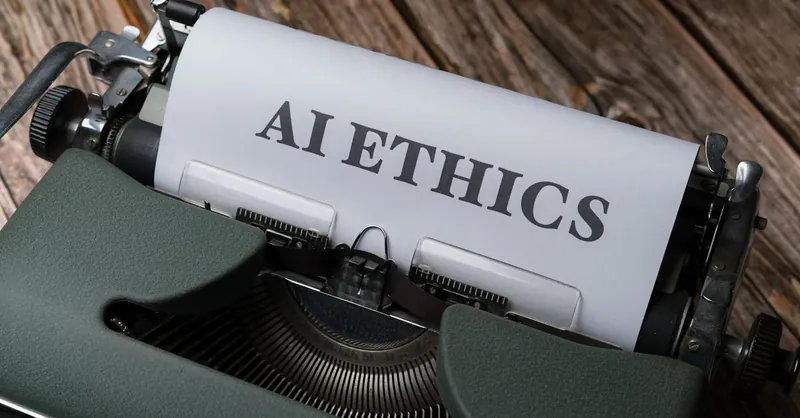
Image courtesy of Markus Winkler
Future Trends in AI and Creativity: What to Expect and How to Prepare
As AI technology continues to evolve rapidly, its role in creative fields is set to become even more transformative and sophisticated. The coming years will usher in AI systems that not only assist with routine tasks but also exhibit advanced contextual understanding, emotional intelligence, and collaborative abilities—blurring the lines between human and machine creativity. Staying ahead of these trends is crucial for professionals and organizations looking to maintain a competitive edge and harness the full potential of AI-driven creative innovation.
Emerging AI Capabilities Shaping Creative Industries
-
Enhanced Multimodal Creativity: Future AI tools will seamlessly integrate text, images, audio, and video inputs and outputs, enabling creators to develop rich, multi-sensory projects with a single platform. This convergence will streamline workflows and foster holistic creative expression.
-
AI as a Co-Creator: Advances in generative AI and reinforcement learning will allow AI systems to better interpret creative intent and provide suggestions that align with an artist’s unique style or brand voice. Expect AI collaborators to actively participate in iterative design, composition, and storytelling processes rather than just serving as passive assistants.
-
Personalized AI Creativity Assistants: AI will leverage user behavior and preferences to deliver highly customized creative support, anticipating needs and adapting its suggestions over time. This personalization will boost productivity by minimizing friction and enhancing creative flow.
-
Real-Time Creative Collaboration: Cloud-based AI platforms will facilitate synchronous collaboration between humans and AI across geographies, integrating creative workflows inside unified environments. This will accelerate idea exchange and shorten project cycles.
-
Expanded Accessibility and Democratization: AI tools will become increasingly intuitive, lowering technical barriers for non-experts and enabling wider participation in creative endeavors—from hobbyists to professionals in underserved markets—thus expanding the global creative economy.
Preparing for the AI-Driven Creative Future
-
Invest in Continuous Learning: Stay informed about emerging AI tools and their capabilities through workshops, webinars, and industry updates. Developing AI literacy is essential to leverage these technologies effectively and ethically.
-
Experiment with Integration Early: Pilot new AI applications within existing workflows to discover synergies and identify productivity gains without causing disruption. Early adoption often yields competitive advantages.
-
Embrace Hybrid Creativity Models: Combine human intuition and emotional insight with AI’s data-driven precision to produce authentic, innovative outputs that resonate deeply with audiences.
-
Focus on Ethical AI Use: Anticipate new ethical challenges by establishing guidelines for transparency, attribution, and bias mitigation as AI becomes more autonomous in creative roles.
By aligning your creative practices with these future trends, you position yourself to harness AI not merely as a tool, but as a true creative partner—fueling breakthrough ideas, elevating artistic quality, and driving sustained productivity improvements in an increasingly AI-enhanced creative landscape.
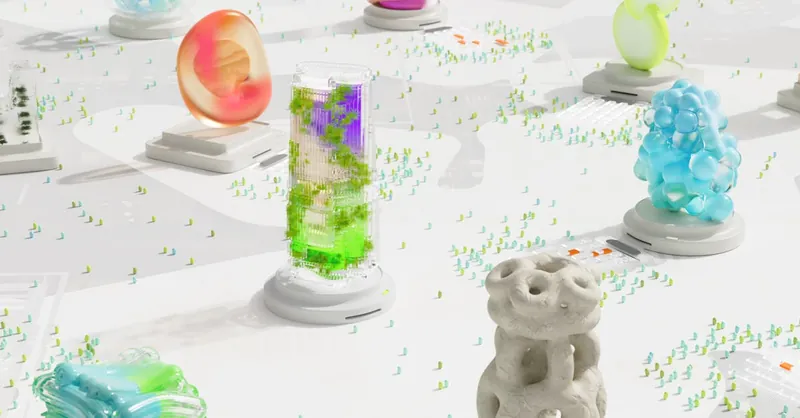
Image courtesy of Google DeepMind
